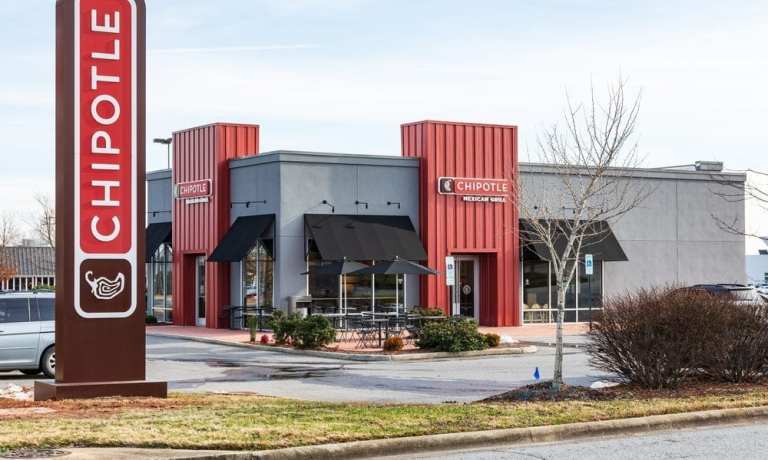Retail Pulse: Chipotle Pilots New Digital-Focused Design; JAB To Merge Coffee Brands

Brick-and-mortar restaurants are rolling out new store designs as their digital businesses increase in size. Chipotle Mexican Grill, in one case, is testing evolved design “to better support its billion-dollar digital business,” the quick-service restaurant (QSR) company said in an announcement, which noted that the pilot would take place in both new and existing locations.
The new design will mirror the QSR’s commitment to transparency. Front-row seating and open views let diners take a peek into the kitchen. There, team members make fresh food by hand daily. According to the firm, “The openness of this design will aim to increase communication and foster a sense of community with the restaurants.” Bottled beverages will be easier for diners to access with a customer-facing reach-in cooler built into the serving line.
“While we are staying true to Chipotle’s heritage, we are also excited to integrate new, innovative physical features into the restaurant that complement our growing digital business,” Chipotle Chief Development Officer Tabassum Zalotrawala said in the announcement. “Our eco-friendly, natural aesthetic and locally sourced approach to this design builds on our strong brand values and mission of cultivating a better world.”
The new features are being brought into restaurants to decrease friction and increase convenience for diners as well as delivery drivers. Premium placement for digital built-in pickup portals as well as walk-up windows will let diners get their food in a more efficient manner than in the past. Chief Technology Officer Curt Garner said in the announcement, “By better suiting our restaurants to accommodate the digital business, we’re able to finalize orders more effectively and provide a better overall experience for our guests.”
Restaurants located in different cities will participate in the test, with existing as well as new stores taking part in the pilot. The effort will also involve different styles of restaurants, with the inclusion of a standalone store with a drive-thru “Chipotlane” and an urban storefront. According to the company, as part of its stage gate procedure, it will “assess the performance of each restaurant for transactions, guest feedback, and ability to incorporate future menu innovations, among other metrics, before determining which design will roll out nationally.”
Chipotle Mexican Grill is not alone in its efforts to design its stores around digital: According to a recent PYMNTS Mobile Order-Ahead Tracker, “Mobile order-ahead continues to grow more popular, with consumers’ preference for digital ordering impacting how physical restaurants are designed and renovated.” Starbucks, in one case, is creating pickup only stores, while smaller chains such as Caribou Coffee are revamping shops with dedicated pickup windows as well as parking spaces for mobile customers.
From Caribou Coffee to Chipotle Mexican Grill, innovative QSRs are creating the designs of their stores with digital ordering in mind.
In Other Brick-and-Mortar News
JAB Holdings is joining together some of the best-known coffee brands around the globe to create a more formidable contender to challenge Nestlé as well as Starbucks. The investment firm will merge coffee roaster Jacobs Douwe Egberts Group and premium U.S. coffee brand Peet’s Coffee into one entity to reportedly gear up for a listing.
JDE Peet’s would become the biggest publicly traded coffee firm, with approximately $7 billion in sales annually, in the event that float occurs. It would be run by the CEO of Peet’s Coffee. The listing would be one of the largest European initial public offerings (IPOs) slated for 2020. JDE Peet’s mostly focuses on selling capsules and roasted coffee beans under brand names such as Tassimo, Senseo and L’Or.
On another note, the number of products shoppers are mailing back to retailers is on the rise, with the growth of online shopping sales. Merchants are seeking new ways to contend with the problem, as $50 billion in profits is left on the table each year. A study by CBRE, in conjunction with Optoro, found that shoppers are forecast to return $41.6 billion in products purchased online this month and in November.
In other news, growth in China’s retail and industrial sectors came out ahead of estimates in November, as government support backed demand in the second-biggest economy in the world. The results came after strong signs of progress in the trade negotiations between the U.S. and China over the weekend after the announcement of a “phase one” trade arrangement.
Retail sales rose 8 percent year on year last month, which was ahead of a forecast 7.6 percent, strengthened by stimulus measures as well as the November Singles Day event. Industrial production increased 6.2 percent year-on-year last month, which beat the median forecast of 5 percent growth in a Reuters poll and accelerated from October’s 4.7 percent.
To keep tabs on the latest retail trends, check next week’s Retail Pulse.